How can Virtual Reality and Metaverse be used in Aviation Industry?
Leveraging Virtual Reality and Metaverse technology in Aviation
Imagine stepping into a cockpit, hearing the hum of engines, vibrating through your bones but as you see outside, you are not rising above the clouds- you’re immersed in a life like virtual environment that can simulate each possible scenario a pilot could face. This is not a distant future; it is the present-day power of Virtual Reality in aviation training.
Immersive shift
Aviation training traditionally relied on lengthy lectures, textbooks, and time-consuming simulator sessions. But what if pilots could experience the flying without going in the air? VR, the game changer in aviation training which turns theoretical knowledge into practical experience. Just by wearing a headset, trainees can encounter everything from turbulent weather conditions to any emergency without risking their lives associated with real-world flying.
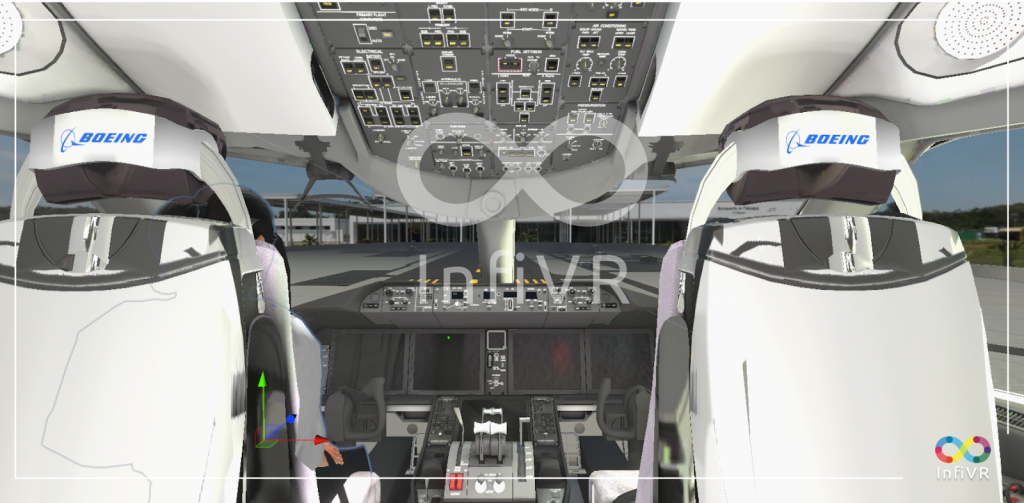
The Tenerife Airport Disaster
Tenerife Airport disaster of 1977 was one of the most infamous accidents in aviation industry, where two Boeings collided, and it was caused primarily due to miscommunications and misjudgments by the flight crews. If VR training had been part of their preparation, pilots could have practiced their responses in such unexpected situations.
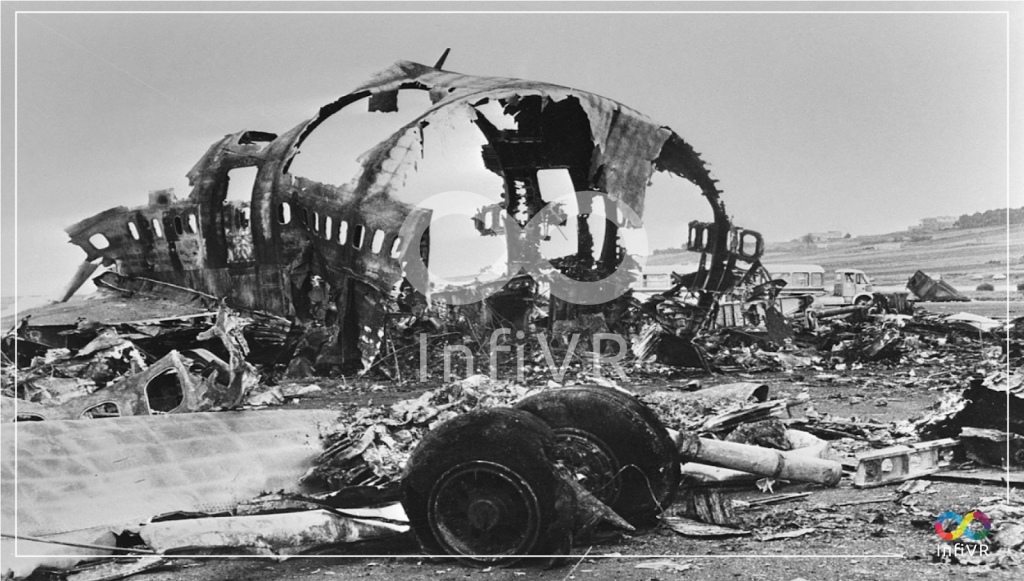
Source- link (https://en.wikipedia.org/wiki/Tenerife_airport_disaster)
Improve Cognitive Ability
VR training is not just about familiarizing the pilots with aircraft controls, it’s about taking decisions under extreme pressure. Trainees can participate in complex scenarios which need quick thinking and working together with team. For example, virtual training module could simulate many scenarios which are difficult to experience like sudden engine failure during take-off, communicating with pilots and air traffic control, and implement emergency procedures, all in real time.
A study released by consulting firm Price Waterhouse Cooper found that VR learners mastered material four times faster than those in a traditional classroom. They were also 275% more confident in applying the skills they learned and felt more emotionally connected and focused compared to classroom and e-learning participants.
Situational Awareness
One of the critical skills that differentiate an average pilot from and exceptional one is situational awareness-ability to fully aware of the surroundings, anticipate any challenges and respond calmly. VR can recreate conditions like suddenly changing weather, loss of visibility or multiple system failures at once, training pilots to analyse and adapt in that situation. This immersive experience provided by virtual reality and mixed reality is difficult to replicate with even Advanced Simulators.
InfiVR collaborates with some of the leading companies in the aviation and aerospace industries to deliver advanced VR solutions. We also partner with top aircraft manufacturers to provide AI – Powered cutting-edge technologies that elevate design and testing activities to the next level.
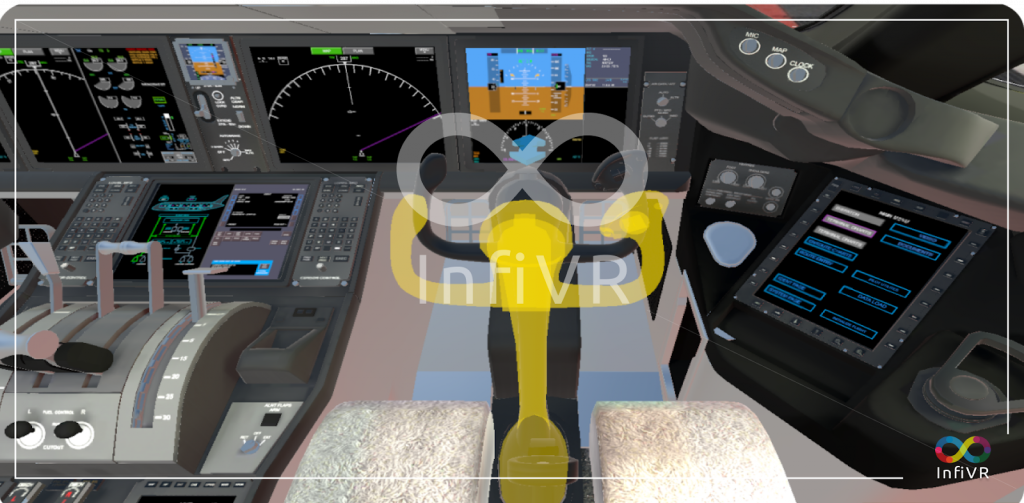
Maintenance Mastery
Aviation safety depends as much on trained technicians as it does on skilled pilots. Trainees can navigate complex engine components, identify issues and practice repair in controlled, risk-free environment. With VR, various mechanical failures are simulated under various conditions by the engineers, and they gain confidence handling critical maintenance tasks. This approach not only improves technical accuracy but also reduces training costs and keeps real aircraft available for operations.
InfiVR working with leading aerospace OEMs and armed forces to deliver advanced AI-driven and metaverse-enabled solutions. These technologies empower teams to perform critical tasks seamlessly, even in remote locations. By leveraging immersive environments and real-time data integration, our solutions eliminate unnecessary delays, optimize decision-making, and ensure operational readiness. This approach enhances preparedness for complex scenarios while reducing resource inefficiencies and time constraints.
Leading Airlines using VR and Metaverse Technology
1. Qatar Airways: The Qverse with Virtual Cabin Tours
Qatar Airways has created the Qverse, a metaverse-based platform where passengers can explore a virtual 3D model of the airline’s cabin and seating arrangements. They’ve also introduced an AI-driven virtual assistant, Sama, to guide passengers through the experience. This initiative enhances customer engagement and simplifies decision-making for travelers.
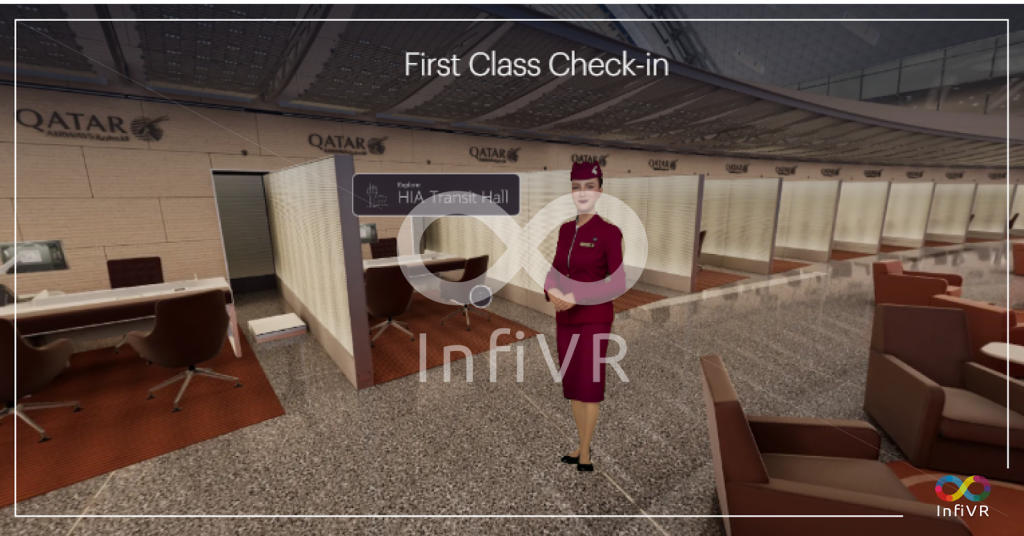
2. Emirates: Redefining Passenger and Staff Training
Emirates utilizes VR for both passenger engagement and staff training. For instance:
- Passenger Engagement: Virtual cabin tours to explore seating arrangements and onboard services.
- Staff Training: Flight attendants use VR simulations to train for emergency situations, customer service, and aircraft operations.
3. Boeing: VR for Aircraft Design and Pilot Training
Boeing has implemented VR and AR technologies for designing and assembling aircraft. Engineers can visualize and modify designs in real time, reducing errors and improving collaboration across teams.
- Training Use Case: Boeing uses VR for pilot and maintenance crew training, enabling them to simulate emergency scenarios and perform virtual walkarounds of aircraft systems.
- Results: Reduced design time by 30% and increased assembly efficiency by 25%, saving millions annually.
4. Airbus: Mixed Reality for Cabin Design and Maintenance
Airbus utilizes mixed reality (MR) to enhance cabin customization and maintenance operations:
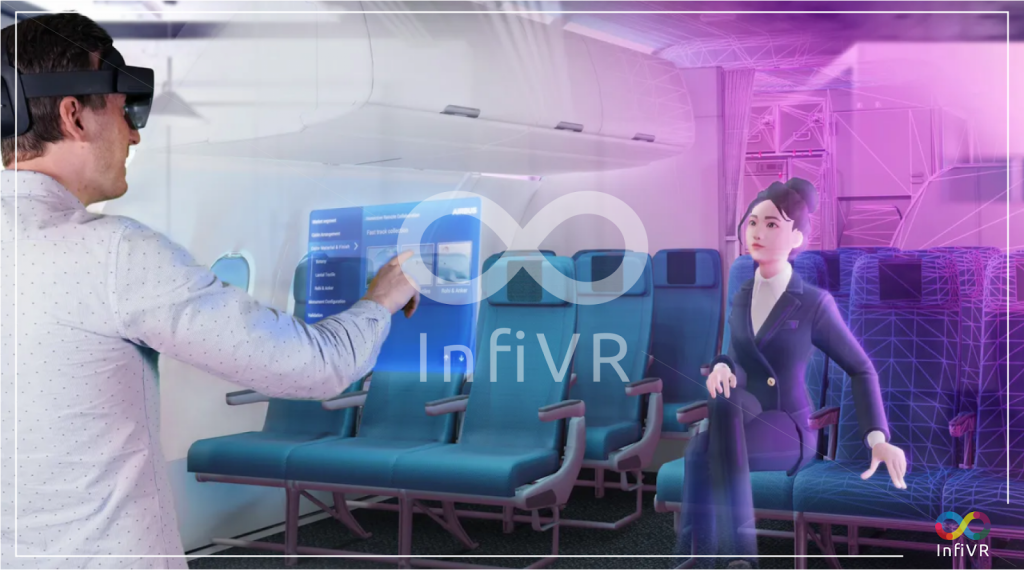
- Virtual Cabin Customization: Airlines can visualize and adjust cabin layouts in VR, ensuring efficient use of space and better passenger experiences.
- Maintenance Training: Engineers train on virtual aircraft, learning to identify faults and perform repairs.
- Results: Airbus reports a 40% improvement in design accuracy and significant reductions in training and operational costs.
How InfiVR enhances Aviation Training
InfiVR develop training modules that simulate a large range of flight scenarios, from daily operations to complex emergencies. With realistic graphics and spatial audio, InfiVR helps trainees to experience themselves in virtual cockpit where they can learn and practice without risk of real-world accidents.
InfiVR’s AI-Powered technology combined with Spatial computing and Mixed Reality, offers pilots to train scenarios such as natural disasters, airspace disturbance and even system hacks. After collaborating with aviation experts and using cutting edge technology, we aim to reshape how pilots are trained, make the process efficient, effective and engaging. Standards of pilot training are redefined after using Virtual Reality and this will save lives in the future.
With VR technology and the innovative approaches in the Aviation Industry provided by InfiVR, the skies are no longer the limit and accidents like Tenerife disaster can be avoided.
The future of aviation training is not just bright—it’s virtual.
Contact us at hello@infiVR.com